
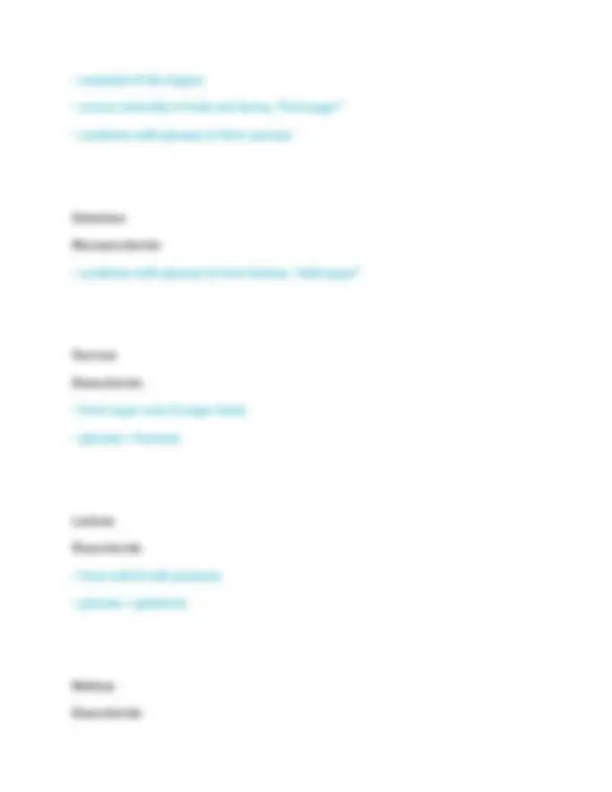
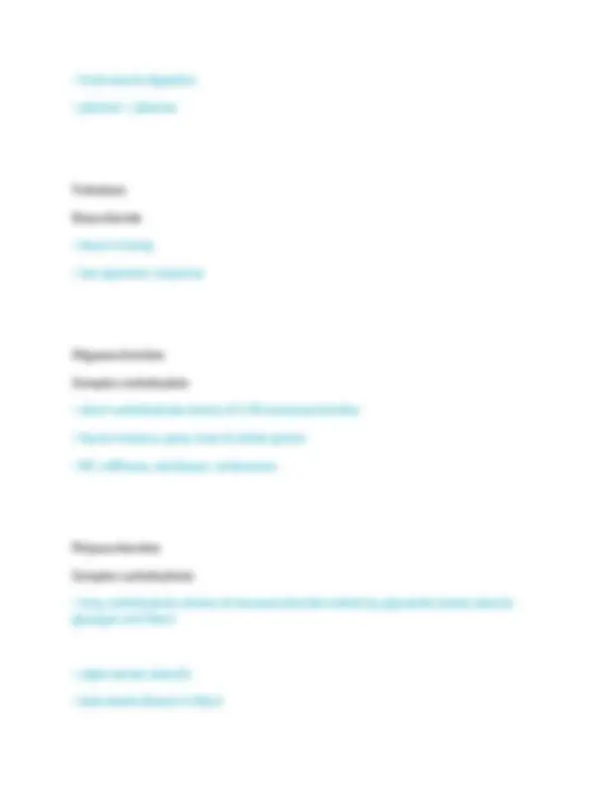
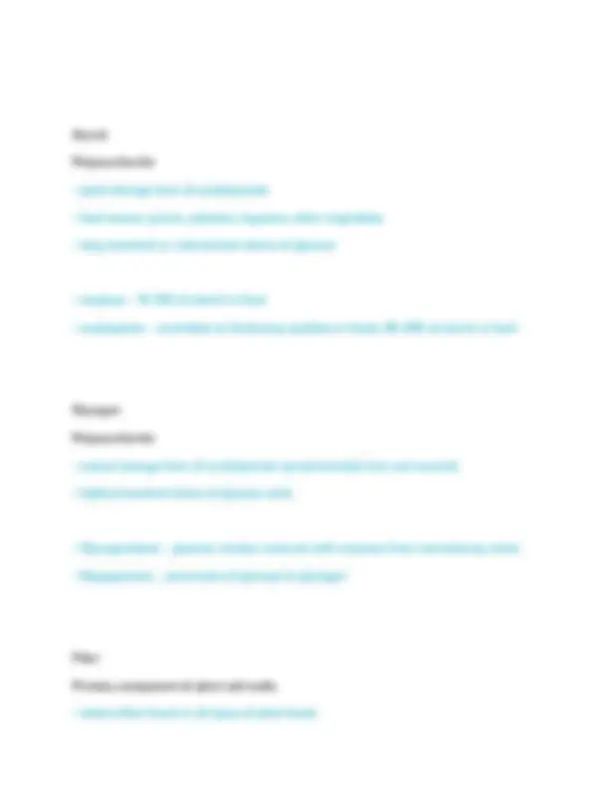
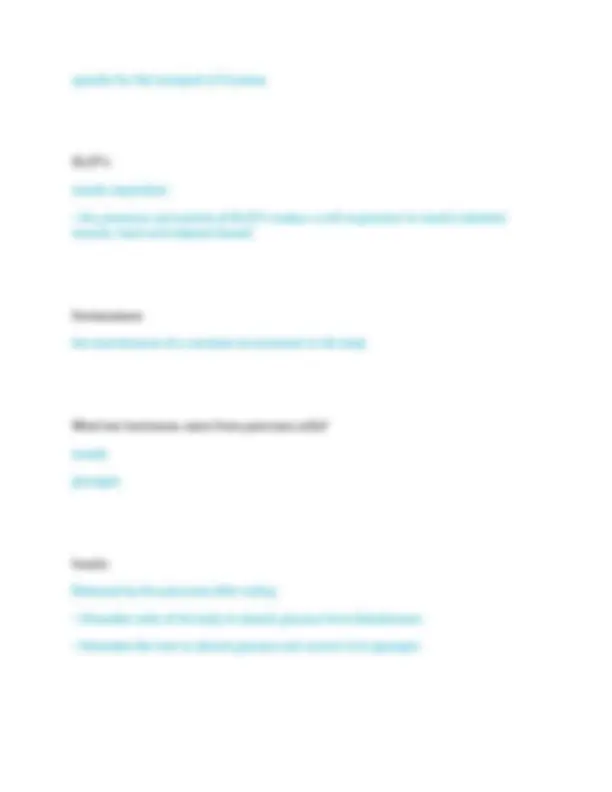
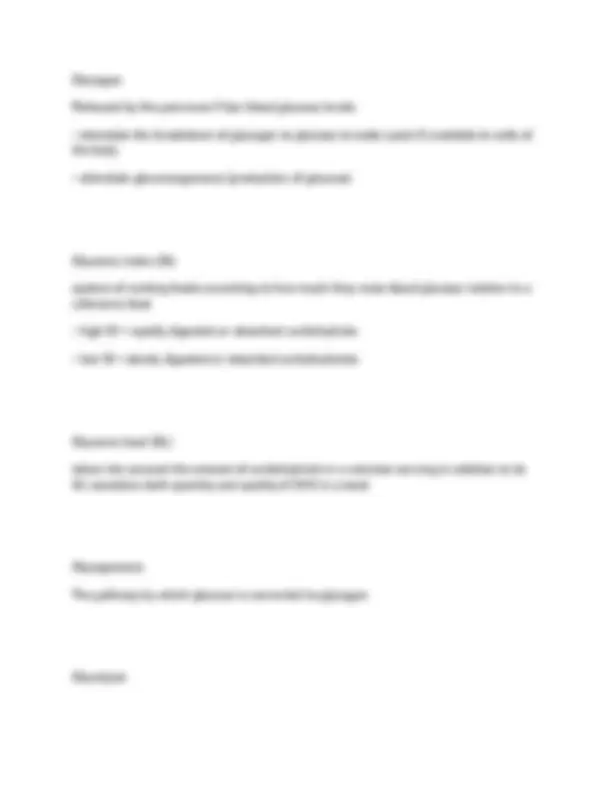
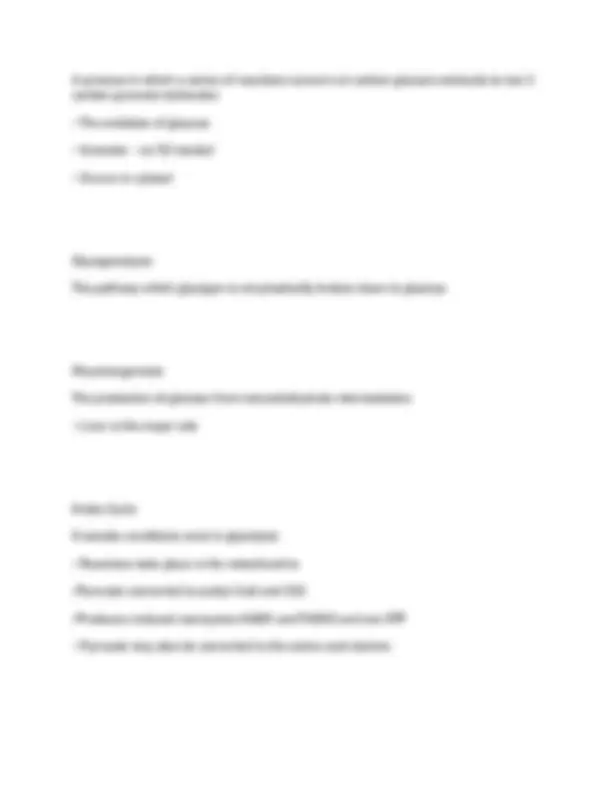
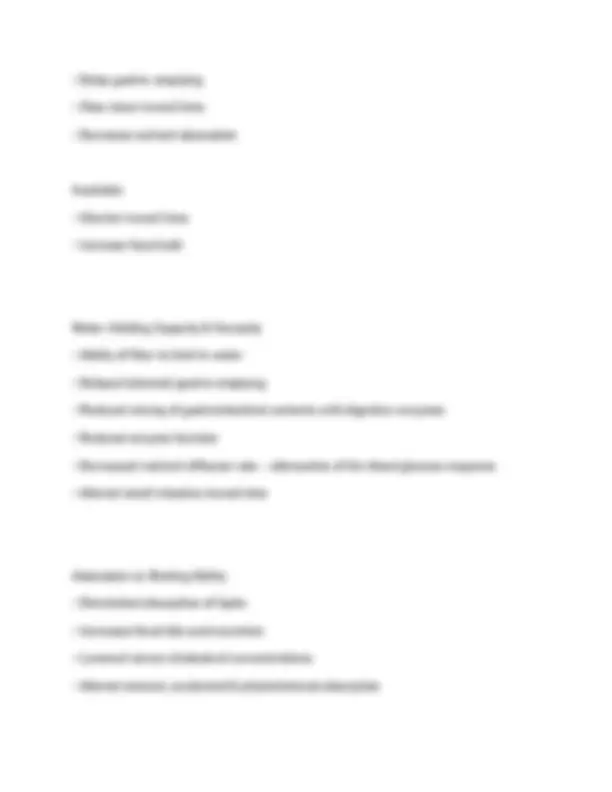
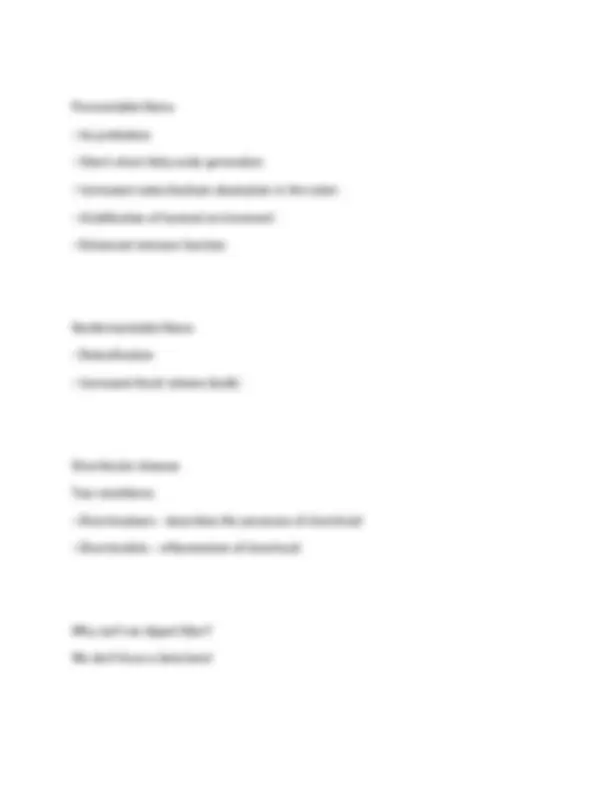
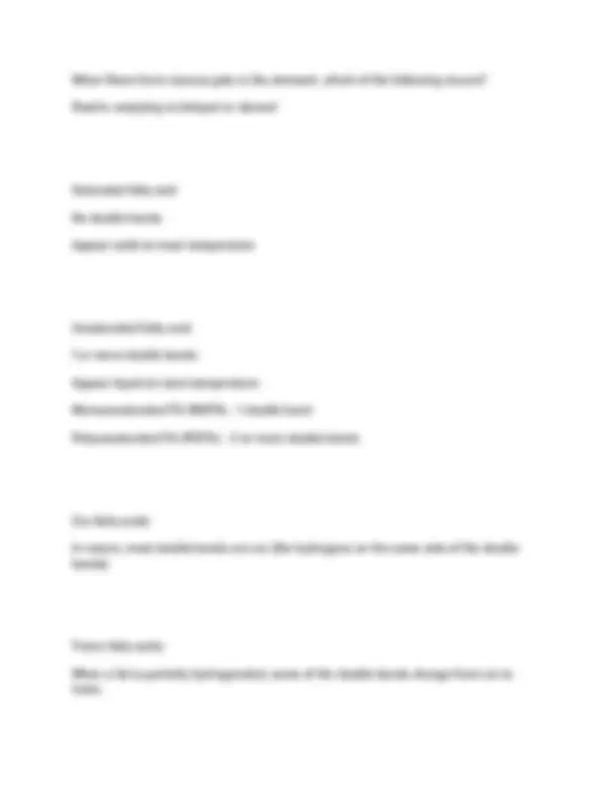
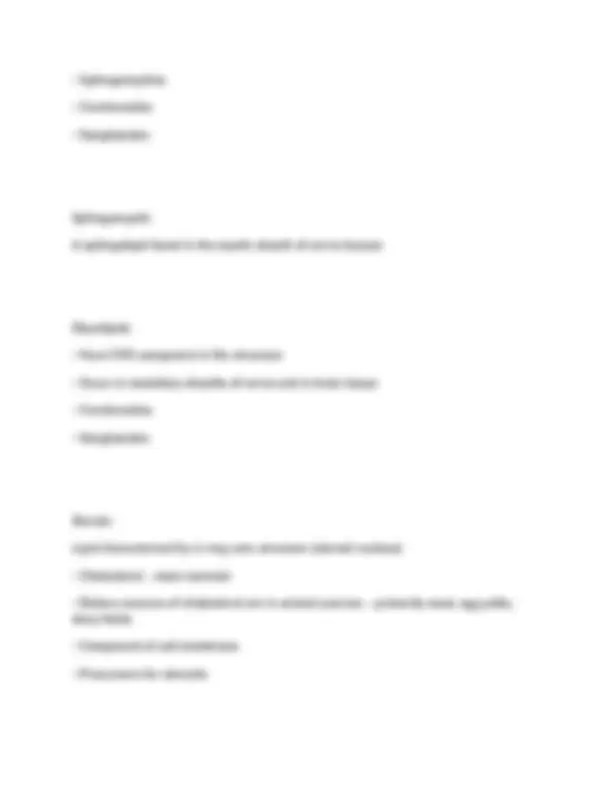
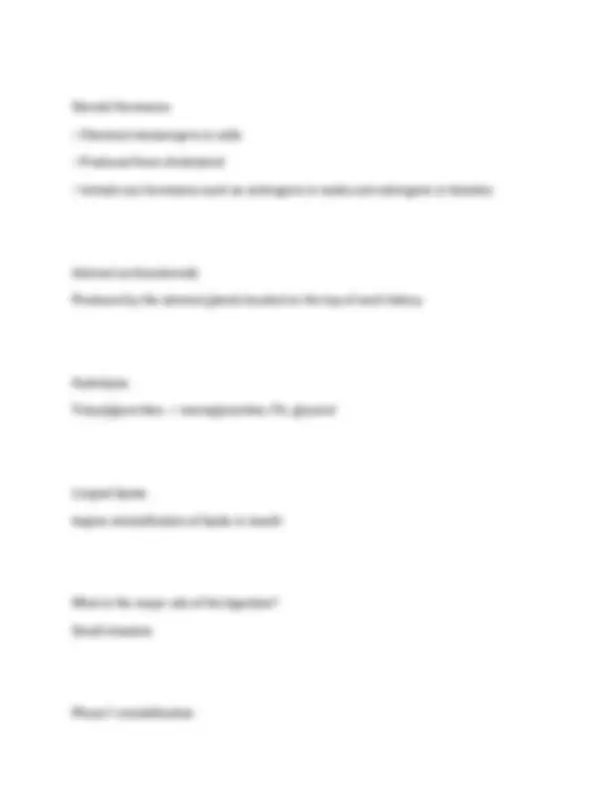
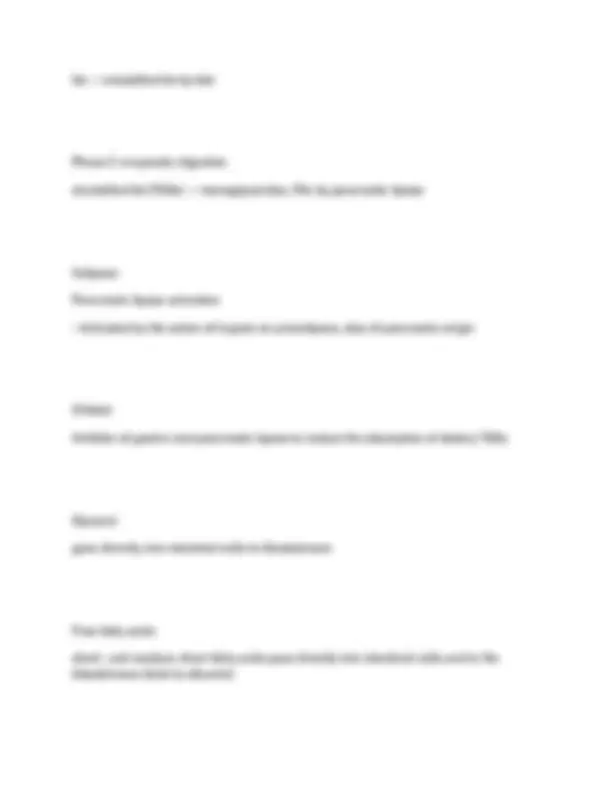
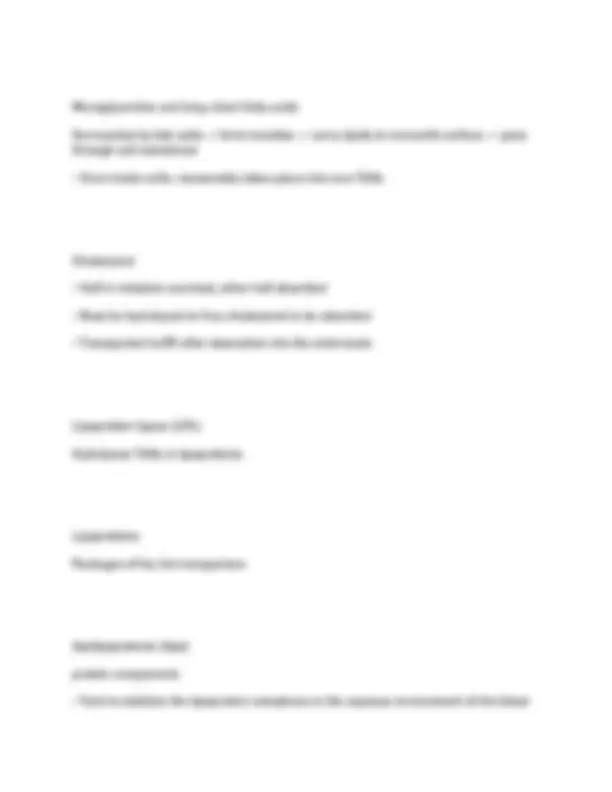
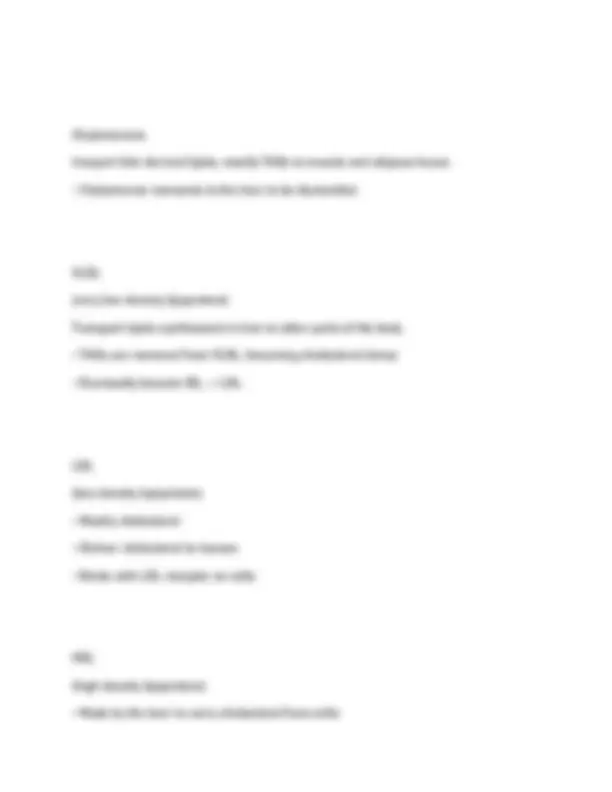
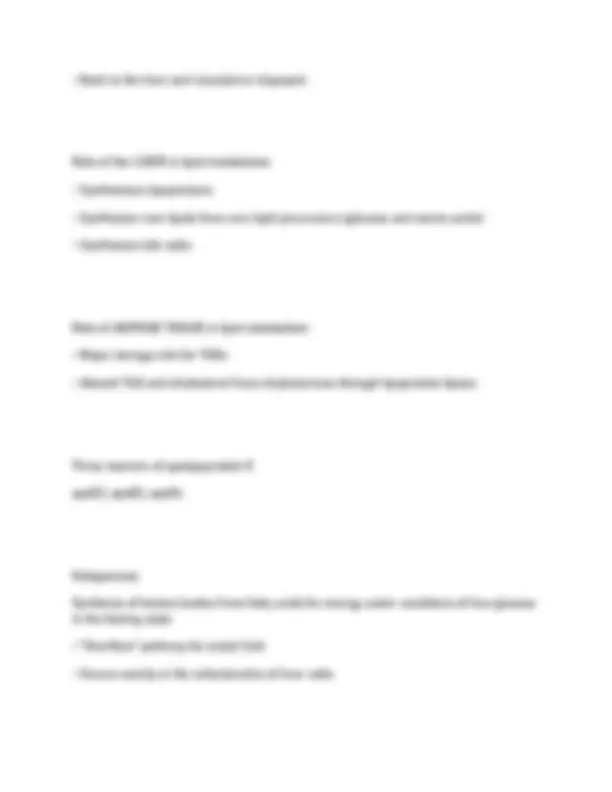
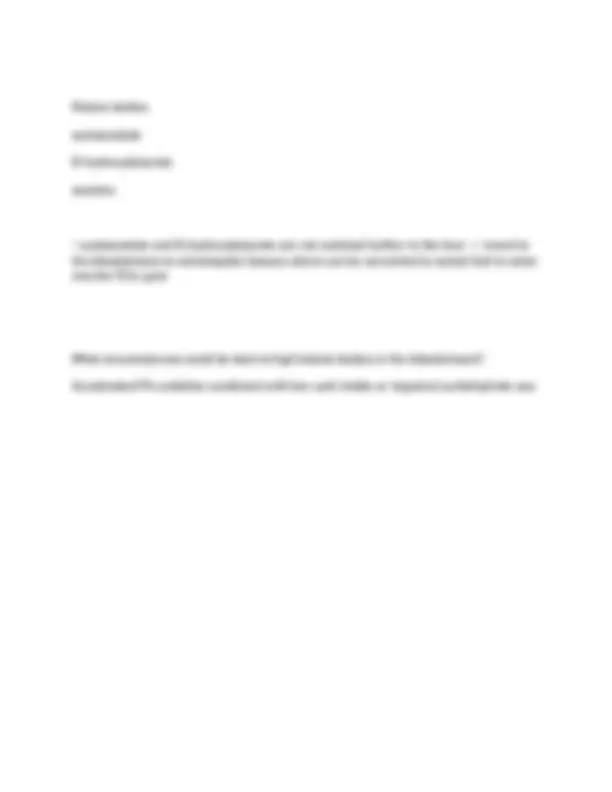


Study with the several resources on Docsity

Earn points by helping other students or get them with a premium plan


Prepare for your exams
Study with the several resources on Docsity

Earn points to download
Earn points by helping other students or get them with a premium plan
Community
Ask the community for help and clear up your study doubts
Discover the best universities in your country according to Docsity users
Free resources
Download our free guides on studying techniques, anxiety management strategies, and thesis advice from Docsity tutors
NSC 419 Advanced Nutrition EXAM 2 2025-2026 Practice Questions with Correct Answers and Highly Rated
Typology: Exams
1 / 24

This page cannot be seen from the preview
Don't miss anything!

















What are carbohydrates? A major source of energy from our body
Composed of the elements C, H, O Also called saccharides, which means "sugars" Produced by photosynthesis in plants Simple carbohydrates Monosaccharides Disaccharides Monosaccharides Simplest form of carbohydrate in that they cannot be reduced in size to smaller carbohydrate units by hydrolysis Glucose Fructose
Galactose Disaccharides Consist of two monosaccharide units joined by covalent bonds Sucrose Lactose Maltose Complex carbohydrates Oligosaccharides Polysaccharides - starches, glycogen, cellulose/fibers Glucose Most abundant monosaccharide carbohydrate form used by the body, referred to as "blood sugar" basic sub-unit of larger carbohydrate molecules fruits, vegetables, honey Fructose Monosaccharide
from starch digestion gluocse + glucose Trehalose Disaccharide found in fungi low glycemic response Oligosaccharides Complex carbohydate short carbohydrate chains of 3-10 monosaccharides found in beans, peas, bran & whole grains EX: raffinose, stachyose, verbascose Polysaccharides Complex carbohydrate long carbohydrate chains of monosaccharides linked by glycosidic bonds (starch, glycogen and fiber) alpha bonds (starch) beta bonds (found in fiber)
Starch Polysaccharide
plant storage form of carbohydrate food source: grains, potatoes, legumes, other vegetables long branched or unbranched chains of glucose amylose - 15 - 20% of starch in food amylopectin - contribute to thickening qualities in foods, 80-85% of starch in food Glycogen Polysaccharide animal storage form of carbohydrate (predominately liver and muscle) highly branched chains of glucose units Glycogenolysis - glucose residue removed with enzymes from nonreducing rends Glygogenesis - conversion of glucose to glycogen Fiber Primary component of plant cell walls dietary fiber found in all types of plant foods
In pancreas, sensitive indicator of blood glucose levels GLUT 5
specific for the transport of fructose GLUT 4 insulin dependent
the presence and activity of GLUT 4 makes a cell responsive to insulin (skeletal muscle, heart and adipose tissue) Homeostasis the maintenance of a constant environment in the body What two hormones come from pancreas cells? insulin glucagon Insulin Released by the pancreas after eating Stimulate cells of the body to absorb glucose from bloodstream Stimulate the liver to absorb glucose and convert it to glycogen
A process in which a series of reactions convert a 6 carbon glucose molecule to two 3 carbon pyruvate molecules
The oxidation of glucose Anarobic - no O2 needed Occurs in cytosol Glycogenolysis The pathway which glycogen is enzymatically broken down to glucose Gluconeogenesis The production of glucose from noncarbohydrate intermediates Liver is the major site Krebs Cycle If aerobic conditions exist in glycolysis Reactions take place in the mitochondria Pyruvate converted to acetyl-CoA and CO Produces reduced coenzymes NADH and FADH2 and one GTP Pyrvuate may also be converted to the amino acid alanine
Cori Cycle
If an O2 debt exists in glycolysis (continued anaerobic conditions) Pyruvate - > lactic acid (lactate) Lactate - > liver for conversion of glucose Glucose reenters circulation What are fibers? Composed of long polysaccharide chains Found in fruits, vegetables, grains & legumes Dietary fibers Nondigestable carbohydrates and lignin that are intact and intrinsic in plants Functional fibers Nondigestable carbohydrates that have been isolated, extracted, or manufactured and have been shown to have beneficial physiological effects in humans Resistant starch Starch that cannot be digested by humans
Delay gastric emptying Slow down transit time Decrease nutrient absorption Insoluble: Shorten transit time Increase fecal bulk Water-Holding Capacity & Viscosity Ability of fiber to bind to water Delayed (slowed) gastric emptying Reduced mixing of gastrointestinal contents with digestive enzymes Reduced enzyme function Decreased nutrient diffusion rate - attenuation of the blood glucose response Altered small intestine transit time Adsorption or Binding Ability Diminished absorption of lipids Increased fecal bile acid excretion Lowered serum cholesterol concentrations Altered mineral, carotenoid & phytochemical absorption
Fermentable fibers
As prebiotics Short-chain fatty acids generation Increased water/sodium absorption in the colon Acidification of luminal environment Enhanced immune function Nonfermentable fibers Detoxification Increased fecal volume (bulk) Diverticular disease Two conditions: Diverticulosis - describes the presence of diverticuli Diverticulitis - inflammation of diverticuli Why can't we digest fiber? We don't have a beta bond
The hydrogens on the opposite sides of the double bond Large amount created through hydrogenation of PUFA Raise LDL and cholesterol and lower HDL, increased inflammation, increased insulin resistance and adiposity Hydrogenated Process of adding hydrogen to unsaturated fat Makes it more "solid" or firm Effects stability and protects against oxidation Linoleic acid Cannot be synthesized in the body & can be taken in the diet Most vegetables oils, safflower oil, soybean oil, corn oil, cotton seed oil (omega-6) a-linolenic acid Cannot be synthesized in the body & can be taken in the diet Fish oils, linseed oil, soybean oil (omega-3)
Triacylglycerols (TAGs) Predominate form of fat in foods & major storage form of fat in the body
Exist as fats or oils at RT, depending on the nature of the component of FAs 3 FA + glycerol Phospholipids Similar to TAGs in structure except only 2 FA + polar head group Important component of cell & organelle membranes Serve as emulsifiers, enabling oils to form a colloid with water 2 types: Glycerophosphatides Sphingolipids
Glycerophosphatides Glycerol + 2 FA + phosphate-containing group
Lecithin - largest group of phospholipids and most common Sphingolipids Contain sphingosine, a FA, phosphate, and a small amino alcohol 3 subclasses:
Steroid Hormones
Chemical messengers in cells Produced from cholesterol Include sex hormones such as androgens in males and estrogens in females Adrenal corticosteroids Produced by the adrenal glands located on the top of each kidney Hydrolysis Triacylglycerides - > monoglycerides, FA, glycerol Lingual lipase begins emulsification of lipids in mouth What is the major site of fat digestion? Small intestine Phase 1: emulsification
fat - > emulsified fat by bile Phase 2: enzymatic digestion emulsified fat (TAGs) - > monoglycerides, FAs by pancreatic lipase Colipase Pancreatic lipase activation
Activated by the action of trypsin on procolipase, also of pancreatic origin Orlistat Inhibitor of gastric and pancreatic lipase to reduce the absorption of dietary TAGs Glycerol goes directly into intestinal cells to bloodstream Free fatty acids
short- and medium chain fatty acids pass directly into intestinal cells and to the bloodstream (bind to albumin)